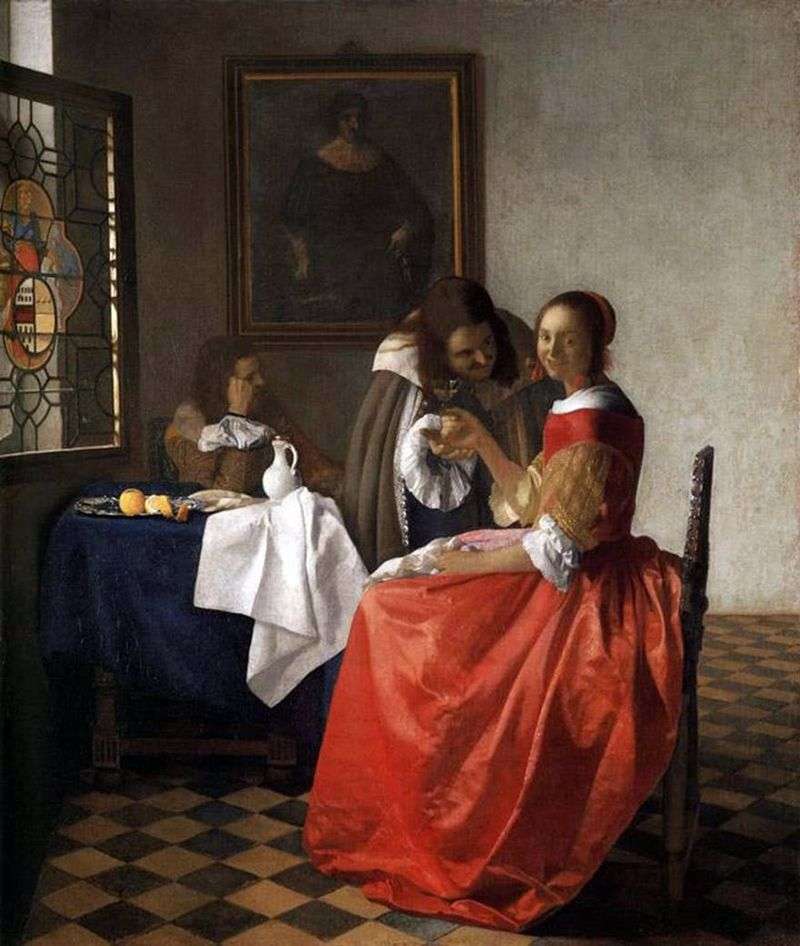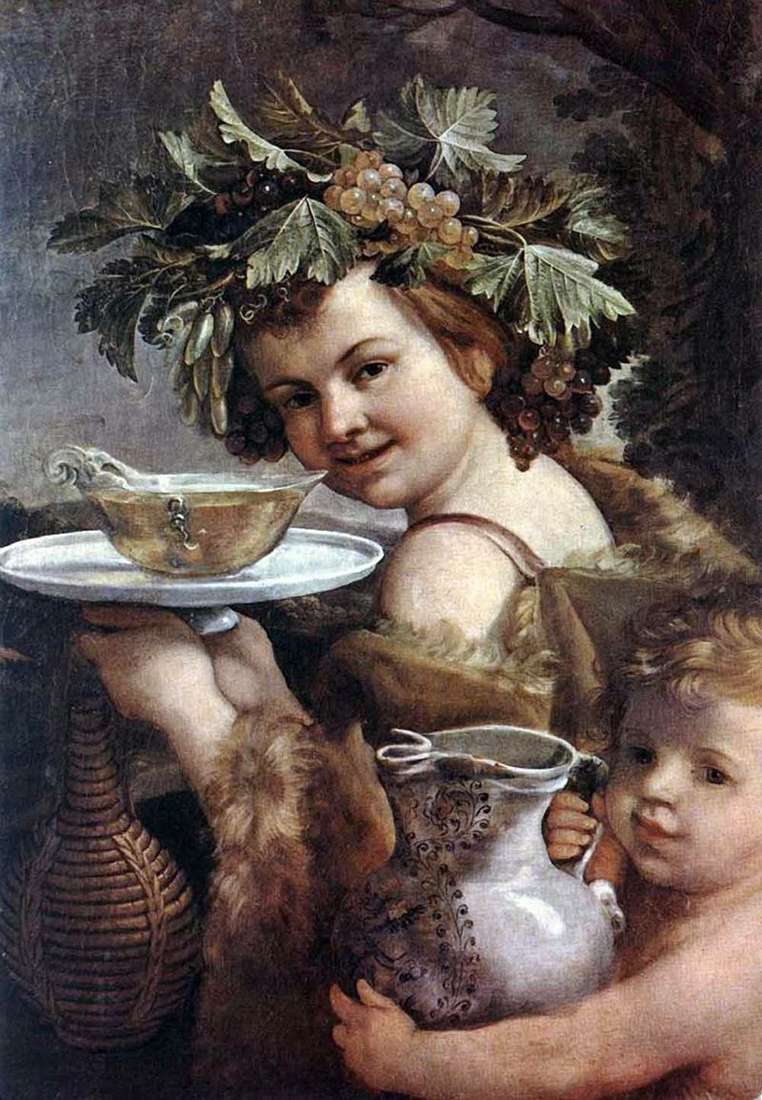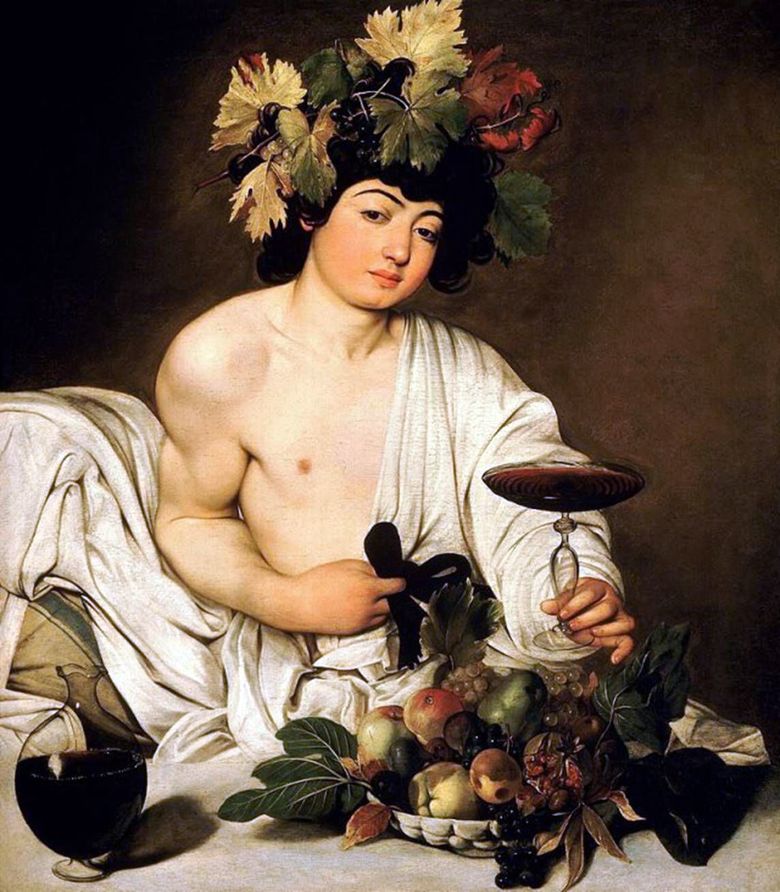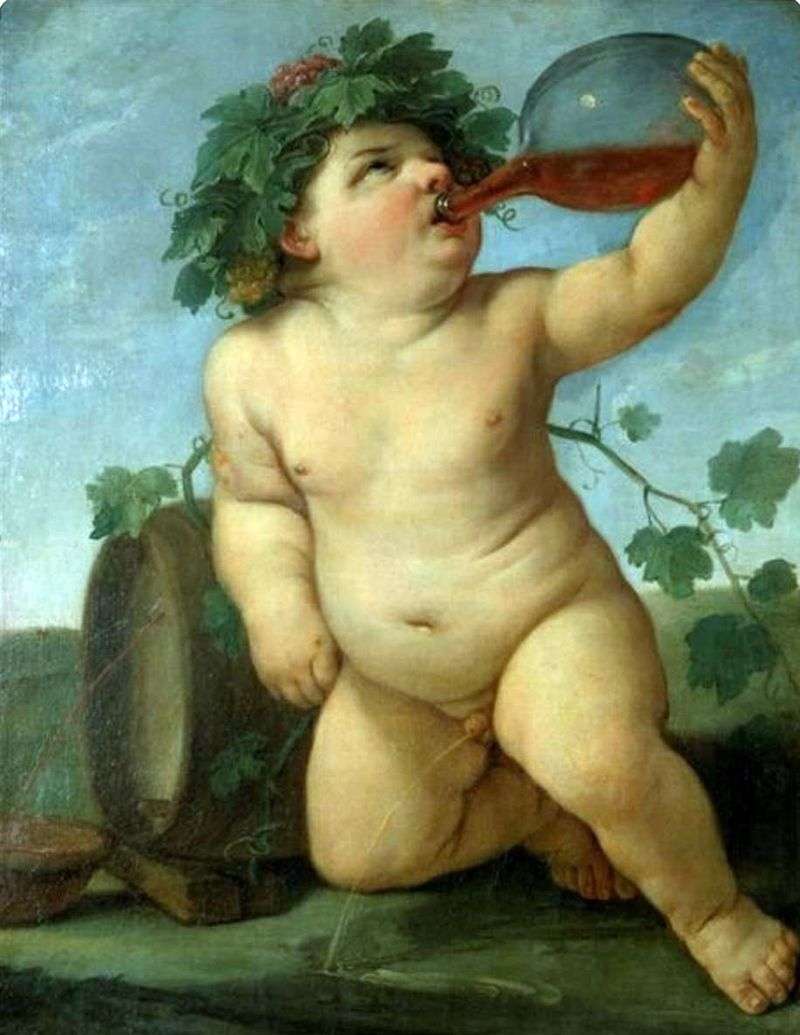
Michelangelo Merisi da Caravaggio, Italian painter who was one of those who first began to work in a beautiful Baroque, wrote “Bacchus” in a rather peaceful and relaxing time in their lives. This is suggested by the fact that the character of Caravaggio painted previously, but did not complete a stiff upper lip strength, and sick and a few shabby man with his haggard face.
The painting is a portrait of a young man in the image of the Greek deity Bacchus. He is dressed, or rather half-dressed in white robes, belted black belt, the end of which Bacchus holds in his right hand. With his left hand he holds a glass full of wine, as if offering the viewer to participate in the feast. On the table in front of the deity is a bowl with fruit and a pot-bellied bottle of wine.
Bacchus healthy and muscular, his cheeks flushed with healthy, no burdened person. But his face was puffy and some effeminate, in his eyes there is nothing but half-drunk longing, which it is not known what may result – whether to fight with mythical drinking buddies, or to sleep among the dining utensils. Black resin boys hair look as artificial, which may be true – there are references to the use of wigs artist.
Bacchus sitting on a white blanket, but it does not block for a long time does not erase striped cushion – a symbol of a kind of impurity. Hand of a young man holding a glass, apparently, and under the nails accumulate dirt – it is more like the hand of a beggar, rather than on the hand of the ancient deities.
Fruit on the table for the most part are only suitable for emission – they are wrinkled, bitten, and some of them rotted and spoiled tracks. Lying among them has lost its presentation pomegranate is a symbol of purity and innocence lost.
 Bacchus by Michelangelo Merisi and Caravaggio
Bacchus by Michelangelo Merisi and Caravaggio Patient Bacchus by Michelangelo Merisi and Caravaggio
Patient Bacchus by Michelangelo Merisi and Caravaggio Lady and two gentlemen by Jan Vermeer
Lady and two gentlemen by Jan Vermeer Junior Bacchus by Guido Reni
Junior Bacchus by Guido Reni Basket of Fruit by Caravaggio
Basket of Fruit by Caravaggio Girl with a lute by Michelangelo Merisi da Caravaggio
Girl with a lute by Michelangelo Merisi da Caravaggio Bacchus – Michel-Ange Merisi da Caravaggio
Bacchus – Michel-Ange Merisi da Caravaggio Prankster Bacchus by Guido Reni
Prankster Bacchus by Guido Reni